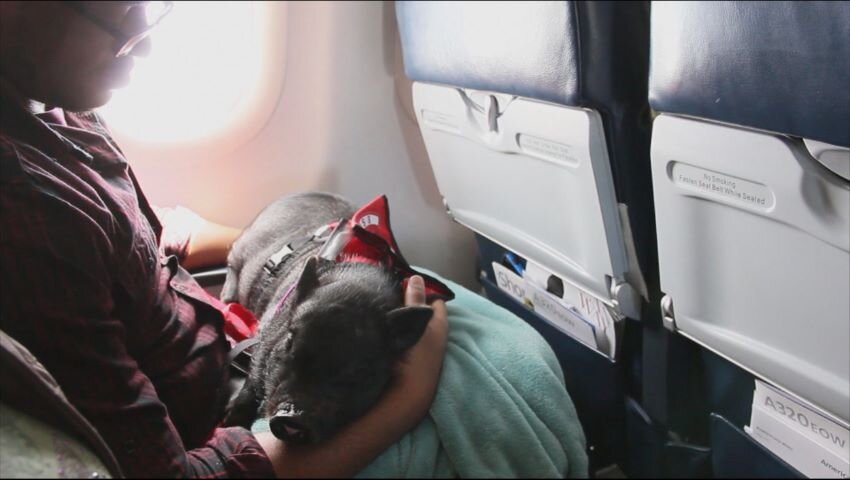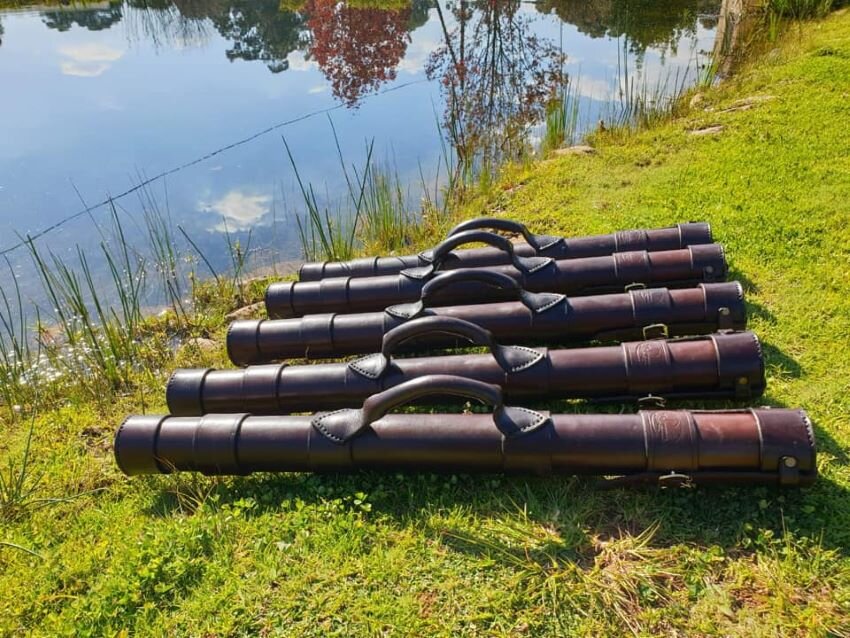Do Not Fly List: These Items Should NOT Go in Your Checked Fishing Luggage
If you’re flying to an epic fishing trip, in most circumstances you’ll have to check a bag at some point. While TSA does provide some vague guidance allowing for hooks to be in your carry-on luggage, ultimately the US government, foreign governments and individual airlines will interpret the regulations differently. The TSA website, for example, makes clear that “the final decision rests with the TSA officer on whether an item is allowed through the checkpoint.” That means no appeals (no calling a manager, even if your name is Karen). Let discretion be the better part of valor -- sharp stuff should get checked.
Also, remember that TSA has the final word in America, but when you’re on foreign soil you’re playing by a whole different set of rules.
Let’s start with lures. Before you place your sharp items in your checked luggage – not just hooks and lures, but also items like fillet knives and other tools – put them in cases or shroud them in bubble wrap. Assume that your luggage will be searched, and it’s not fair to the people working to keep us safe to put them at risk. Besides, if you do end up injuring them, that just increases the likelihood that your gear will be “misplaced” or confiscated.
Beyond that, there are both practical and logical “rules” about what you can, should, can and cannot put in your checked luggage.
First, be prepared to lose anything and everything. Unlike some of you, I don’t think most baggage handlers and TSA agents are thieves, and I’ve been fortunate not to lose anything, but at the same time I’m sure there are some bad apples out there. Don’t tempt them. That means that any small items you can carry on your person should stay with you at all times – for example, cash, medications and fine jewelry (the latter of which begs the question: Why the hell are you bringing fine jewelry on a fishing trip?).
What other things should you not place in your checked luggage?
If you answered “firearms,” you might be wrong. As long as you pack them correctly, declare them properly, fly with an airline that allows them, and comply with local, state and/or international guidelines, you CAN bring a firearm on a fishing trip. That may be important if you’re headed out on a “cast and blast” expedition. Flare guns, however, are not allowed.
Definitely do not pack illegal narcotics – you do not want to end up in any jail, least of all a foreign one. That means you can bring home souvenirs, but avoid any protected national treasures or natural resources. I would also recommend as a general matter against bringing seeds, produce or meat into a foreign country, or back from a foreign country, with the one notable exception being bringing home fish fillets under certain circumstances. We brought home 96 pounds of sockeye and king salmon from Alaska this year. If you want to do that, make sure you have a proper container (both hard-sided and soft-sided coolers can be checked, and in Alaskan airports fish boxes are ubiquitous) and that the fish is fully frozen. Freezer packs are OK as long as they are frozen solid when presented for screening. The inclusion of dry ice is up to the airline, and even if it is allowed you’re maxed out at 5.5 pounds.
Surprisingly, you may be allowed to bring live fish in your carry-on bags (but not your checked luggage): “Live fish in water and a clear transparent container are allowed after inspection by the TSA officer.” I assume this is intended for tropical fish, not your trophy tarpon. Certain locations and countries may frown upon you taking home their prized resources, and the introduction of non-native species is a problem as well, so use discretion if you try this one. [Note: live coral is allowed in carry-on luggage, but not checked luggage.)
I was surprised that TSA’s list prohibited “English Christmas Crackers” in both checked and carry-on luggage. I figured this was some continuing animus against British food dating back to the Revolutionary War, but a quick Google search revealed that they are not baked goods, but rather a snapping table decoration.
That brings us to a good point – you don’t want anything that is going to explode in your luggage, causing damage to your gear or – worse yet – the plane itself. That means many aerosols are banned, including WD40 and other flammables. On the other hand, non-flammable aerosols like shaving cream and whipped cream (what kind of kinky angler brings whipped cream on a fishing trip?) are allowed. Also, both the FAA and TSA specify that flammable liquids, gels and paints are not allowed.
The Mexican bass guides all swear by chartreuse dipping dye on their soft plastics. Are the dips and aerosols like Spike-It flammable? Tackle Warehouse’s site states that “This product is flammable and can not be shipped Air. It CAN ONLY be shipped UPS Ground.” Other products, like Dyeing2Fish, do not have that same disclaimer. Use your discretion here – a dye pen might be your safest option.
I can tell you without a doubt that you should not fly with JJ’s Magic, one of the most effective scent/dye products. It will build up pressure and crack the jar. Luckily, when I made this mistake I’d had the foresight to double-wrap the jar in a couple of Ziploc bags which prevented all of my luggage from smelling like a spaghetti dinner.
What about inflatable life jackets? I’d always heard stories about them inflating when placed in pressurized situations and assumed that they would be banned. Surprisingly, TSA states that you may bring a life vest with up to two CO2 cartridges inside, plus two spare cartridges in your carry-on or checked bag. You may not transport CO2 cartridges without the associated lifejacket. Still, if you need a PFD and your outfitter does not provide them, I’d first recommend finding another outfitter, and second recommend that you bring a standard non-inflatable.
As noted above, aerosols are a huge area of concern and confusion. For example, aerosol insecticides are not allowed in carry-on bags, but they are allowed in checked bags as long as they are not labeled as hazardous material (HAZMAT). My advice: if you’re going to need sunblock or bug repellent, bring a lotion or liquid. If you’re headed to Alaska, remember that bear spray is not allowed on any US commercial flights (on Alaska flyouts they put it inside the floats of the float plane) but limited quantities of other self-defense sprays (like mace, pepper spray) may be allowed.
Finally, in case you were wondering, hand warmers and toe warmers are allowed – Hanna will be happy.
















